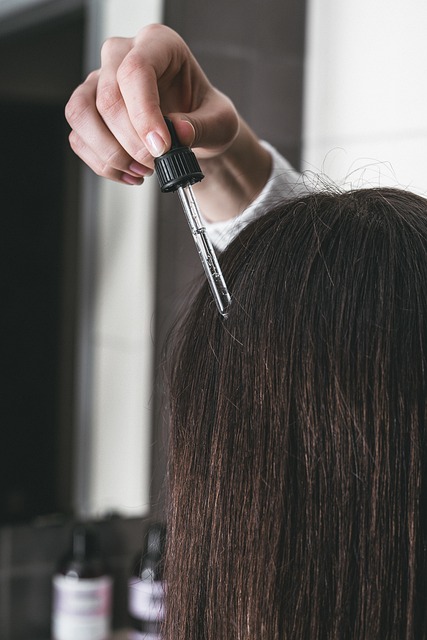Taming Frizz: Mastering Smooth and Silky Hair
Frizzy hair has long been a challenge for many, transcending cultural boundaries and hair types. This unruly phenomenon occurs when the outer layer of hair, the cuticle, becomes raised, allowing moisture to penetrate and swell the strands. The result is a halo of flyaways that can frustrate even the most patient among us. While frizz has been a persistent issue throughout history, modern advancements in hair care have brought new hope to those seeking smoother, more manageable locks. From ancient remedies to cutting-edge treatments, the quest for frizz-free hair continues to evolve, reflecting our ever-changing relationship with beauty standards and self-expression.

Factors such as genetics, hair texture, and environmental conditions all contribute to the likelihood of experiencing frizz. Curly and wavy hair types are particularly prone to frizz due to their natural structure, which allows for more gaps in the cuticle layer. Additionally, chemical treatments, heat styling, and even aggressive towel-drying can exacerbate the problem by further damaging the hair’s protective outer layer.
Historical Approaches to Frizz Control
Throughout history, various cultures have developed unique methods to combat frizz. Ancient Egyptians used castor and almond oils to smooth their hair, while Indian Ayurvedic practices incorporated coconut oil and herbs. In medieval Europe, egg whites and animal fats were popular choices for taming unruly locks.
As societies evolved, so did hair care practices. The Victorian era saw the rise of pomades and brilliantines, often made from animal fats or petroleum jelly. These products helped to smooth and style hair, though they often left it greasy and difficult to clean. The 20th century brought about significant advancements in hair care technology, with the introduction of silicone-based products and the popularization of chemical straightening treatments.
Modern Innovations in Frizz Control
Today’s market offers a wide array of frizz-fighting solutions, ranging from at-home treatments to professional salon services. One of the most significant innovations in recent years has been the development of keratin treatments. These semi-permanent smoothing procedures work by infusing the hair with keratin, a protein naturally found in hair, skin, and nails. The treatment helps to repair damaged cuticles and create a protective layer around each strand, resulting in smoother, more manageable hair for several months.
Another breakthrough in frizz control comes in the form of bond-building products. These treatments work at a molecular level, repairing and strengthening the bonds within the hair shaft. By addressing the internal structure of the hair, these products not only reduce frizz but also improve overall hair health and resilience.
Natural and Sustainable Frizz-Fighting Methods
As consumers become more conscious of the environmental impact of their beauty routines, there has been a growing interest in natural and sustainable frizz-fighting methods. Many are turning to time-tested ingredients like argan oil, shea butter, and aloe vera to nourish and smooth their hair without relying on synthetic chemicals.
Silk and satin accessories have also gained popularity as a gentle, eco-friendly way to reduce frizz. Sleeping on silk pillowcases or using silk scrunchies can help minimize friction and prevent moisture loss, both of which contribute to frizz formation. Additionally, microfiber towels have become a staple in many hair care routines, as they are less abrasive than traditional cotton towels and help to reduce frizz-causing friction during the drying process.
The Role of Diet and Lifestyle in Frizz Management
While external treatments play a crucial role in frizz control, internal factors should not be overlooked. A balanced diet rich in omega-3 fatty acids, vitamins, and minerals can contribute to healthier, more resilient hair that is less prone to frizz. Foods like salmon, avocados, and nuts are particularly beneficial for hair health.
Hydration is another key factor in managing frizz. Drinking adequate water helps to keep the body, including the hair, properly hydrated from the inside out. Some experts also recommend incorporating scalp massages into one’s routine, as they can stimulate blood flow to the hair follicles and promote overall hair health.
Customizing Frizz Control for Different Hair Types
Recognizing that not all frizzy hair is created equal, hair care experts have begun to emphasize the importance of tailored approaches for different hair types and textures. For example, those with fine, frizzy hair may benefit from lightweight leave-in conditioners and serums, while those with thick, coarse hair might find heavier oils and creams more effective.
Curl patterns also play a significant role in determining the best frizz-fighting strategy. Loose waves may require different products and techniques compared to tight coils. This personalized approach to frizz control has led to the development of more diverse product lines and specialized salon services catering to a wide range of hair types and concerns.
The Future of Frizz Control
As technology continues to advance, the future of frizz control looks promising. Researchers are exploring new ingredients and formulations that could revolutionize how we manage unruly hair. Some areas of interest include biomimetic materials that mimic the natural properties of smooth hair and smart polymers that adapt to changing environmental conditions to provide consistent frizz protection.
Additionally, there is growing interest in the potential of microbiome-friendly hair care. Just as the skin has a delicate balance of microorganisms, so does the scalp. Future frizz-fighting products may focus on nurturing a healthy scalp microbiome to promote overall hair health and reduce frizz from the root.
In conclusion, the journey to tame frizzy hair has been long and varied, reflecting our evolving understanding of hair science and changing beauty standards. From ancient oils to cutting-edge molecular treatments, the quest for smooth, manageable hair continues to drive innovation in the beauty industry. As we look to the future, personalized approaches and sustainable solutions are likely to shape the next chapter in frizz control, offering hope to those seeking the perfect balance of health, manageability, and style for their hair.




